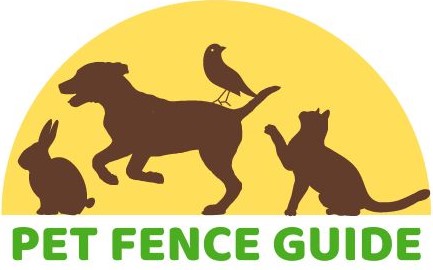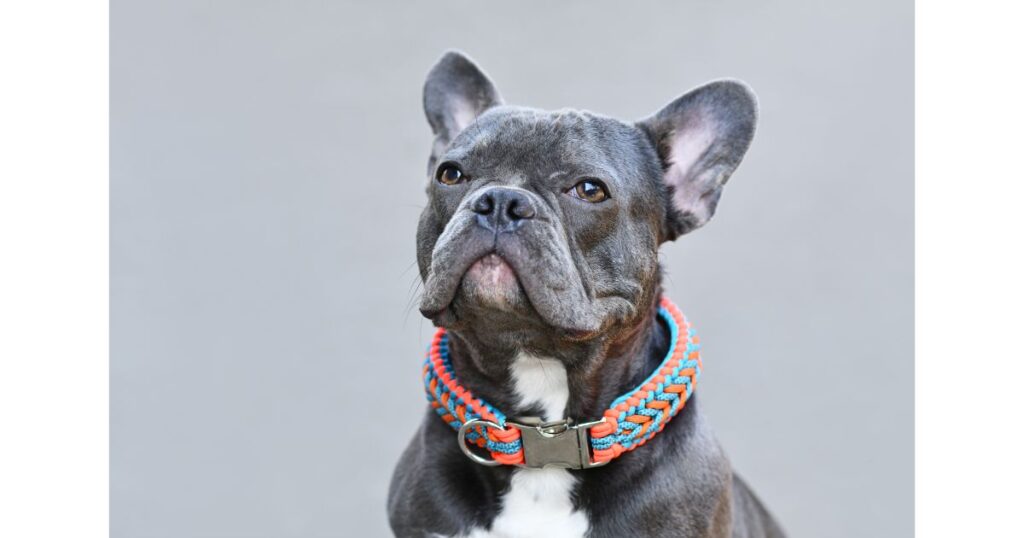Are you a proud dog owner looking for alternatives to traditional fences? Keeping your furry friends safe while allowing them to roam freely is a priority for many pet parents. In this comprehensive guide, we’ll explore various dog fence alternatives that will help you protect your pup while ensuring they have a happy and healthy life.

Understanding the Need for Dog Fence Alternatives
Table of Contents
ToggleIn the realm of pet ownership, ensuring the safety and freedom of our furry friends is paramount. For many, the traditional wooden, metal, or chain-link fence has been the go-to solution for keeping our beloved dogs within a certain boundary. However, times have changed, and homeowners now find themselves exploring innovative dog fence alternatives. Let’s delve into why you might be considering these alternatives, along with the situations where traditional fences may not be the ideal choice.
1. Budget Constraints
The first consideration when contemplating dog fence alternatives is budget constraints. Traditional fences can be a significant financial investment. The materials, labor, and maintenance costs associated with conventional fencing can quickly add up. For those with limited resources, finding a cost-effective alternative that still ensures their dog’s safety becomes a top priority.
2. Aesthetic Concerns
Homeowners often take great pride in the aesthetics of their properties. A well-maintained garden, carefully chosen landscaping, and a picturesque yard contribute to the overall appeal of a home. Traditional fences, while effective, can disrupt the visual harmony of your outdoor space. The desire to preserve the beauty of your surroundings prompts many to seek less intrusive dog fence alternatives that blend seamlessly with the landscape.
3. Rental Properties
If you find yourself in the category of renters rather than homeowners, you may encounter restrictions that prevent you from installing a permanent fence. Landlords may have policies against altering the property’s structure or appearance, making traditional fencing a non-viable option. In such cases, it’s crucial to explore temporary and non-invasive dog fence alternatives that can be used without altering the rental property’s landscape.
4. Flexibility
Traditional fences come with a substantial limitation: they define a rigid boundary for your dog. While this can provide security, it also restricts your dog’s freedom to roam. For homeowners with larger properties, this limitation can become a significant concern. The desire for a solution that offers more flexibility and a broader area for their dog to explore is a driving force behind considering dog fence alternatives.
Exploring Dog Fence Alternatives
Now that we’ve established the reasons for contemplating dog fence alternatives, let’s explore the diverse range of options available to address these concerns. These innovative alternatives cater to various preferences, property types, and budgets, ensuring that there’s a perfect fit for every dog owner.
Whether it’s the budget-friendly option of invisible dog fences, the convenience and versatility of wireless dog containment systems, the secure play space of dog playpens, or even the natural beauty of dog-repellent plants, there’s a dog fence alternative to meet your specific needs.
Choosing the right alternative for your dog hinges on several factors, including your dog’s personality, your property’s layout, your budget, and your willingness to invest time in training and maintenance. The goal is to provide a safe and happy environment for your furry friend while keeping your property visually pleasing and budget-friendly.
In conclusion, as dog owners, we cherish our pets and seek the best solutions to ensure their well-being. Dog fence alternatives provide a range of options to meet our needs, whether driven by budget, aesthetics, rental property restrictions, or the desire for flexibility. By exploring these alternatives, you can select the perfect solution to create a secure and contented environment for your furry companion while preserving the beauty of your home.
Now that we’ve established the reasons for considering alternatives, let’s explore the various options available to you.
In the world of pet ownership, keeping our furry friends safe and allowing them the freedom to roam is a top priority for dog owners. Traditional fences, made of wood, metal, or chain link, have long been the conventional solution for creating a safe boundary for our dogs. However, in recent times, homeowners and pet parents have begun to explore innovative and practical dog fence alternatives. Let’s delve into the reasons why you might be considering these alternatives and the situations where traditional fences may not be the ideal choice.
Understanding the Need for Dog Fence Alternatives
Before we explore the myriad options available, it’s crucial to understand why you might be contemplating dog fence alternatives. Traditional fences, though effective, come with limitations that may not suit every dog owner’s circumstances.
1. Budget Constraints
The first consideration when contemplating dog fence alternatives is budget constraints. Traditional fences, be it wooden, metal, or chain link, can be a significant financial investment. The materials, labor, and maintenance costs associated with conventional fencing can quickly add up. For those with limited financial resources, finding a cost-effective alternative that still ensures their dog’s safety becomes a top priority.
2. Aesthetic Concerns
Many homeowners take great pride in the aesthetics of their properties. A well-maintained garden, carefully chosen landscaping, and a picturesque yard contribute to the overall appeal of a home. Traditional fences, while effective, can disrupt the visual harmony of your outdoor space. The desire to preserve the beauty of your surroundings prompts many to seek less intrusive dog fence alternatives that blend seamlessly with the landscape.
3. Rental Properties
If you find yourself in the category of renters rather than homeowners, you may encounter restrictions that prevent you from installing a permanent fence. Landlords may have policies against altering the property’s structure or appearance, making traditional fencing a non-viable option. In such cases, it’s crucial to explore temporary and non-invasive dog fence alternatives that can be used without altering the rental property’s landscape.
4. Flexibility
Traditional fences come with a substantial limitation: they define a rigid boundary for your dog. While this can provide security, it also restricts your dog’s freedom to roam. For homeowners with larger properties, this limitation can become a significant concern. The desire for a solution that offers more flexibility and a broader area for their dog to explore is a driving force behind considering dog fence alternatives.

Exploring Dog Fence Alternatives
Now that we’ve established the reasons for contemplating dog fence alternatives, let’s explore the diverse range of options available to address these concerns. These innovative alternatives cater to various preferences, property types, and budgets, ensuring that there’s a perfect fit for every dog owner.
1. Invisible Dog Fence
An invisible dog fence, often known as an underground or wireless dog fence, uses a buried wire or radio signals to create an invisible boundary for your dog. It is a popular choice for many dog owners.
Pros: Invisible fences are relatively affordable, easy to install, and maintain the aesthetics of your yard.
Cons: They may not be suitable for all dogs, as training is required. Some dogs might breach the boundary when tempted by a squirrel or other distractions.
2. Dog Playpens
A dog playpen is a portable enclosure made of panels that allow your dog to have a designated, safe space.
Pros: Playpens can be set up indoors or outdoors and provide a secure area for your dog to play. They are particularly useful for puppies.
Cons: They are not ideal for larger dogs that require more space to roam.
3. Tie-Outs
A tie-out is a long leash that attaches to a stationary point in your yard, allowing your dog to move within a designated radius.
Pros: Tie-outs are inexpensive and easy to use. They offer a larger roaming area compared to traditional leashes.
Cons: Dogs can become tangled in the leash, and it may not provide as much freedom as other alternatives.
4. Wireless Dog Containment Systems
Wireless dog containment systems use radio signals to establish a boundary for your dog, much like invisible fences.
Pros: They are portable and easy to set up. No digging is required, and they are adjustable.
Cons: Just like invisible fences, these systems require training, and some dogs may challenge the boundaries.
5. Dog Repellent Plants
Consider planting certain types of shrubs and flowers that dogs dislike near the borders of your property.
Pros: This is a natural and aesthetically pleasing way to deter dogs from crossing boundaries.
Cons: The effectiveness varies, and it might take time for the plants to grow and have the desired impact.
6. Outdoor Pet Enclosures
Outdoor pet enclosures are large, enclosed spaces where your dog can play freely while staying safe.
Pros: They offer ample space for your dog to exercise and play, and they can be customized to fit your yard.
Cons: These enclosures can be relatively expensive and require more space.
7. Training and Obedience
With proper training and obedience, you can teach your dog to respect boundaries without the need for physical fences or other alternatives.
Pros: It strengthens the bond between you and your dog, and it’s a long-term solution.
Cons: Training can be time-consuming and may not work for all dogs, especially if they have strong wanderlust.
8. Natural Barriers
Depending on your property, you can use natural barriers like hills, ditches, or water features to keep your dog from straying.
Pros: Natural barriers can be aesthetically pleasing and require little maintenance.
Cons: Not all properties have suitable natural features for this purpose.
9. Motion-Activated Sprinklers
Motion-activated sprinklers are devices that spray water when they detect movement in a certain area.
Pros: They discourage dogs from entering specific zones and can protect your garden from digging.
Cons: These devices may also startle your dog and should be used with care.
10. Pet GPS Collars
Pet GPS collars can help you keep track of your dog’s location and set safe boundaries using a smartphone app.
Pros: They provide real-time tracking, ensuring you always know where your dog is.
Cons: The initial cost and subscription fees can add up over time.
Choosing the Right Alternative for Your Dog
When considering dog fence alternatives, it’s crucial to assess your dog’s personality, your property’s characteristics, your budget, and your willingness to invest time in training and maintenance. The goal is to provide a safe and happy environment for your furry friend while keeping your property visually pleasing and budget-friendly.
In conclusion, as dog owners, we cherish our pets and seek the best solutions to ensure their well-being. Dog fence alternatives provide a range of options to meet our needs, whether driven by budget, aesthetics, rental property restrictions, or the desire for flexibility. By exploring these alternatives, you can select the perfect solution to create a secure and contented environment for your furry companion while preserving the beauty of your home.
To make the best choice:
- Know Your Dog: Understand your dog’s breed, size, energy level, and any specific behavioral traits that might impact their response to a particular alternative.
- Evaluate Your Property: Consider the size and layout of your yard. Some alternatives may work better in small spaces, while others are ideal for larger properties.
- Budget Considerations: Determine how much you’re willing to invest in a dog fence alternative. Some options are budget-friendly, while others require a larger initial investment.
- Training and Maintenance: Be prepared to invest time and effort into training your dog for some alternatives, and consider the ongoing maintenance required.
Final Thoughts
Selecting the right dog fence alternative is a significant decision for both you and your furry companion. Each option has its advantages and limitations, so it’s essential to weigh them carefully. Remember that no matter which alternative you choose, ensuring your dog’s safety and happiness should always be the top priority.
Now that you’re well-versed in the various dog fence alternatives, you can confidently make an informed decision to keep your dog secure and content. Whether it’s an invisible fence, a playpen, or any other creative solution, your four-legged friend will thank you for providing them with a safe and enjoyable environment.
By exploring these dog fence alternatives, you can make the best choice for your unique situation and enjoy peace of mind while your pup explores the world around them. Happy tails and safe adventures!








